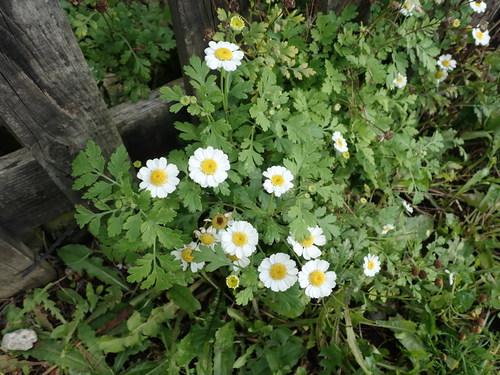
Feverfew (Tanacetum parthenium)
Feverfew, also known as Featherfoil
Feverfew (Tanacetum parthenium) has a rich history in traditional and folk medicine, addressing various health concerns. Originating from Eurasia, it is also valued as an ornamental plant.
**Traditional Uses:**
1. **Migraine Relief**: Historically, feverfew has been used to lessen the occurrence and intensity of migraines.
2. **Anti-inflammatory**: It has been employed for its anti-inflammatory effects, particularly in treating arthritis and other inflammatory conditions.
3. **Fever Management**: True to its name, feverfew has been used to help reduce fevers.
4. **Menstrual Symptom Relief**: Known for alleviating menstrual cramps and related symptoms.
**Ornamental Uses:**
1. **Garden Aesthetics**: The plant is appreciated for its charming, daisy-like flowers and aromatic leaves, enhancing garden beauty.
2. **Insect Deterrent**: It serves as a companion plant, repelling pests and protecting other garden plants.
3. **Floral Arrangements**: Feverfew’s long-lasting blooms are perfect for fresh and dried floral arrangements, adding both visual and aromatic appeal.
4. **Wildlife Attraction**: Its flowers are known to attract butterflies, bees, and hummingbirds, contributing to a lively garden ecosystem.
These uses highlight feverfew's importance in both herbal practices and ornamental gardening.